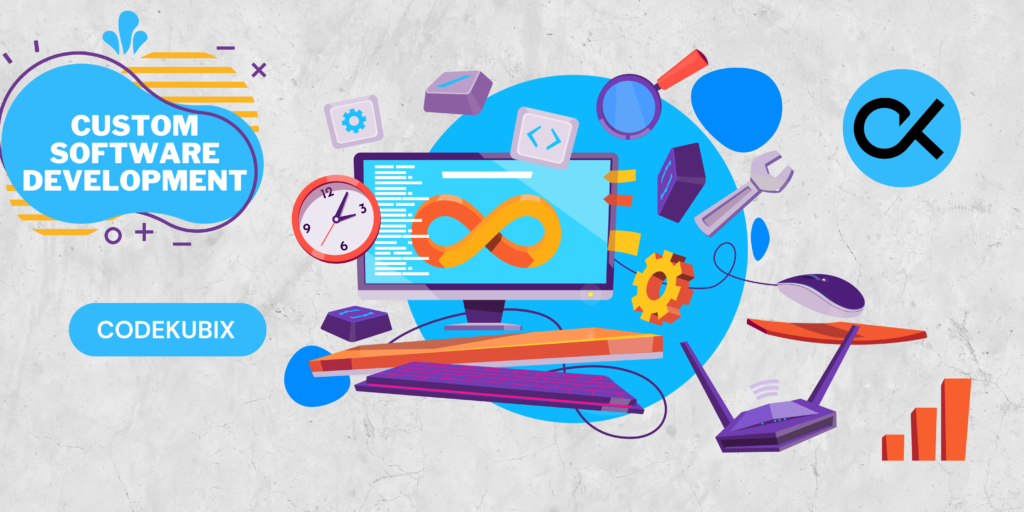
When discussing “custom software,” the advantages it offers are immeasurable. Regardless of whether it is a startup or a large enterprise, personalized software solutions have the potential to propel businesses of all sizes to greater success. However, in order to fully benefit from these advantages, meticulous planning of the entire process is crucial.
When a company requires software solutions that are not met by pre-existing software, it opts to engage a team for bespoke software development. This helps mitigate potential risks like delays, budget overruns, communication issues, feature-heavy solutions, intellectual property disputes, and lack of code control.
1. Documenting every stage of development, outlining both your existing process and future requirements
It is crucial to have a thorough understanding of your current processes. If uncertain, seek guidance from experts in the field to avoid assumptions that could lead to unsatisfactory results. Additionally, before developing custom software, ensure you have a clear answer to the question: What problem are you aiming to solve? Seek feedback from investors at different levels and avoid jumping straight into testing theories. To guarantee success, make sure you have a test design and checklist for thorough vetting, a statement of scope for defined deliverables, an implementation plan with timelines and user details, and user documentation including FAQs.
2. Pick up the right software development team
Consider the option of having your internal team create custom software to cut costs. However, this decision could lead to significant challenges.
- Initially, you will need to decrease the workload of your internal team, impacting your overall business operations.
- Moreover, your IT professionals may lack the necessary skills or experience to develop complex custom software applications. In such situations, it is advisable to consider outsourcing software development to a reputable offshore partner with a proven track record.
- The advantages of partnering with an outsourcing firm include: Access to a team of highly skilled and experienced software developers who have completed similar projects in the past.
- Working with a vendor who specializes in creating customized software solutions for your specific industry.
3. Create a solid strategy with predetermined goals
In order to initiate the development process, it is crucial to assemble a team consisting of domain experts, skilled software engineers, and a capable project manager. Collaboratively, construct a suitable roadmap that aligns with your objectives. It is essential to ensure that your plan is grounded in reality, enabling you to stay on the right path.
Furthermore, establish predetermined milestones to effectively monitor the progress of your development process. By setting milestones, you can keep a comprehensive record of each stage, allowing you to assess the work completed at each milestone. This approach will keep you well-informed about any potential changes in terms of time or budget, if necessary.
4. Choose the most suitable stack for web development
When it comes to selecting the perfect technology stack, it is crucial to understand the importance of custom software and the advantages it can bring to your business. Whether you are looking to streamline processes, boost productivity, or enhance the overall customer experience, identifying your specific needs is key. Consulting with experts to determine the best technology for your business is a smart move.
- Define the ultimate product – Understand the purpose, target audience, and impact of your product.
- Platforms – Determine whether you need a web application, mobile app, desktop app, or a combination of these.
- Development – Opt for stable technologies and tools that can accelerate the development process.
- Talent pool – Select technologies that are widely used by developers to make hiring easier and more cost-effective.
5. Testing is the way to achieve the best product
Testing is a crucial step in the software development process. It is essential to ensure that your custom software functions properly and meets your business needs. By conducting both user testing and technical testing, you can guarantee that your software runs smoothly and provides the maximum value to your organization.
User testing allows you to assess if the software aligns with your requirements and goals, while also evaluating the user experience and interface. On the other hand, technical testing focuses on examining the foundational elements of the software to ensure seamless operation.
Make sure to prioritize testing to avoid any issues and optimize the performance of your custom software.

CONCLUSION
By partnering with a reliable custom software development services provider, you can overcome obstacles such as evolving customer needs, improving business processes, and increasing productivity. Their strong, responsive, and high-quality services will serve as the foundation for your business success in this digital age. Our previous information has shed light on the benefits of custom software. If you are in need of a development company, reach out to us to discuss your project. We will assist you in making informed decisions and avoiding common pitfalls, ensuring that your solution is delivered on time. Until then, refer to our comprehensive article as your trusted guide.
